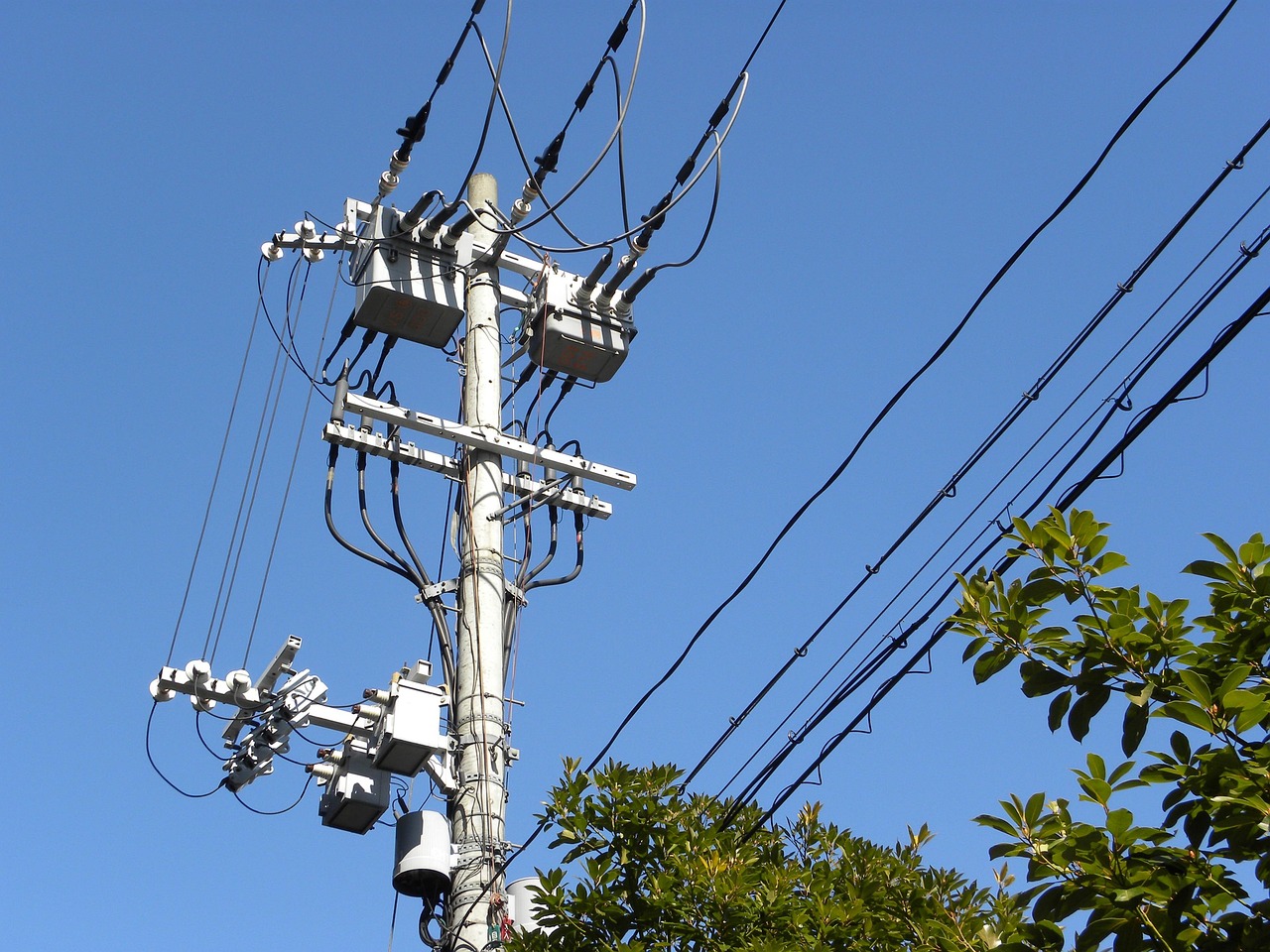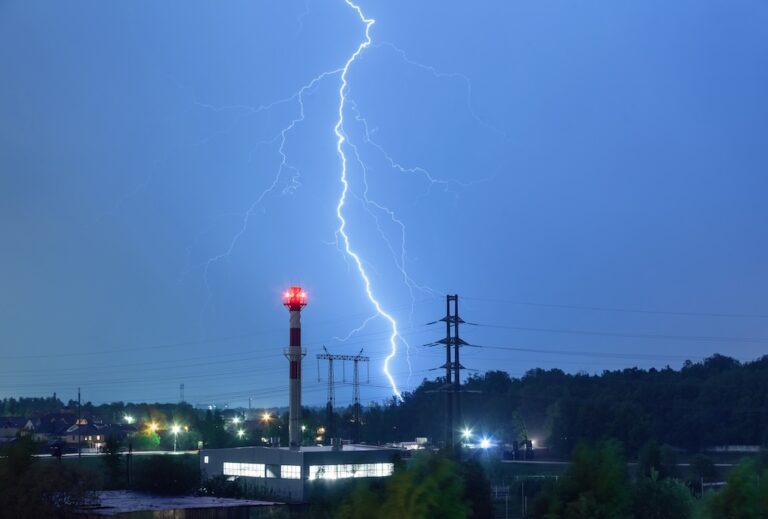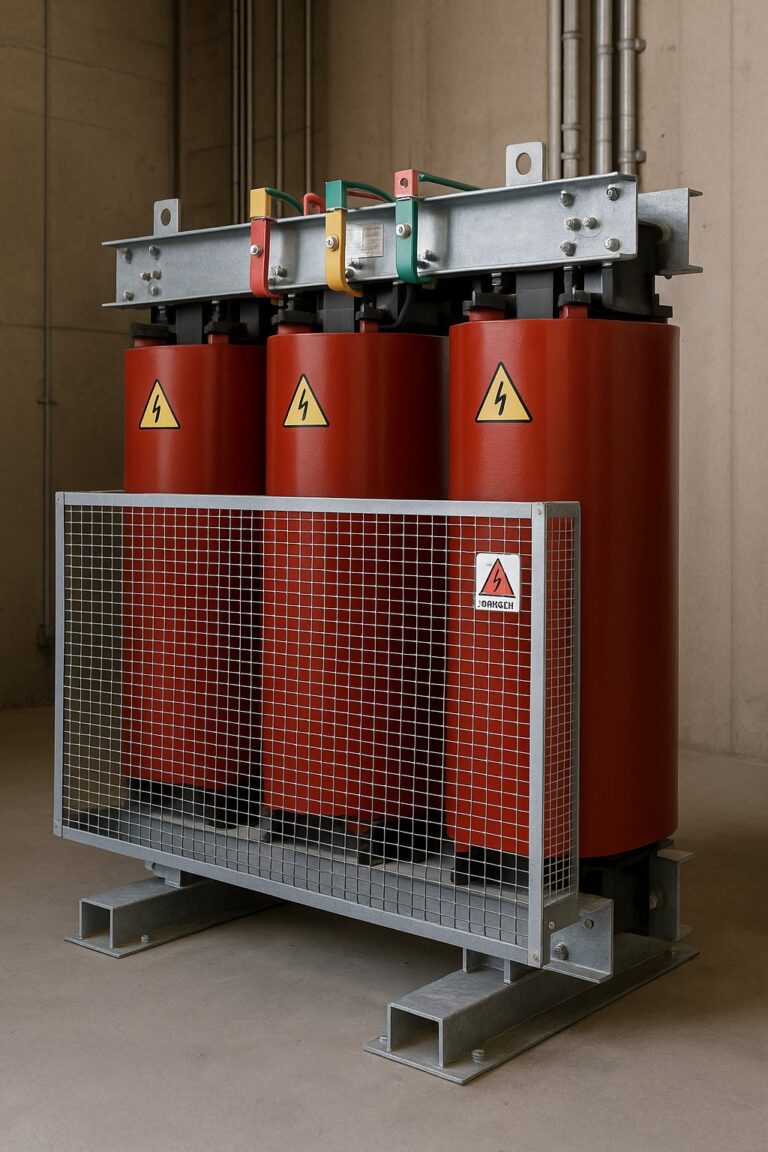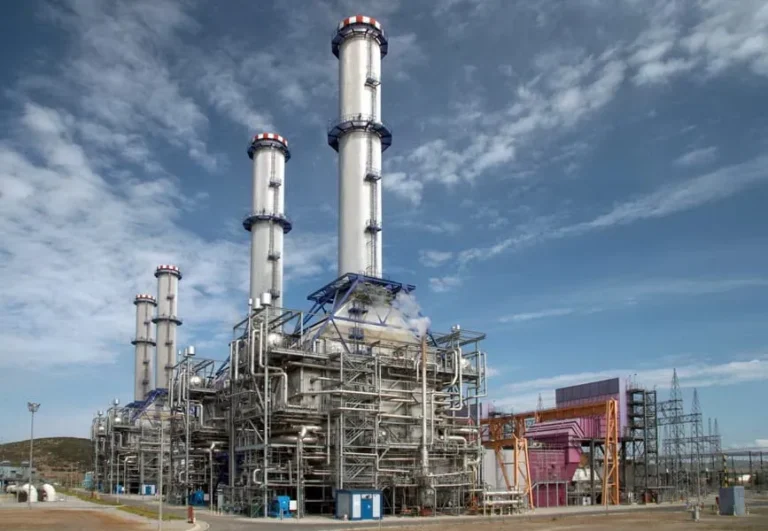What is a Lightning Rod? Where is the Lightning Rod System Used?
Lightning is a natural phenomenon that poses serious risks to buildings, electrical systems, and human safety. A single lightning strike...
Devamını Oku

Efficient and secure energy transmission is only possible through the correct choice of a pole type transformer, which plays a critical role in both urban and rural power infrastructures. With varying types of pole type transformers, power capacities, and use cases, these systems ensure that electricity reaches consumption points in a balanced and safe manner. Their compact installation and cost-effectiveness make them highly preferred in the field.
At Adatech, we bring our engineering expertise into every pole type transformer project we undertake. From power transmission lines to transformer installation, pole type transformer measurement panels integration, and commissioning, we provide full-spectrum solutions. Our experienced engineers design tailored systems for residential and industrial zones, optimizing pole type transformer powers based on demand. In this content, you’ll find comprehensive information on everything from the definition and types to materials and pricing criteria for pole-mounted transformers. As a company that follows the latest developments in transformer technology, we prioritize quality and sustainability in every project.
A pole type transformer is a kind of transformer mounted directly on concrete or steel utility poles, primarily used in medium voltage distribution networks up to 36 kV. Compact and space-saving, it eliminates the need for a separate transformer building. These transformers enable rapid deployment in the field, offering both time and cost efficiency for power distribution applications.
When answering the question what is pole type transformer, it’s essential to consider its role in distributing energy safely and reliably across different regions. Pole type transformers are designed to meet localized power needs, whether in urban neighborhoods or remote rural areas. A well-engineered pole type transformer project evaluates environmental conditions, energy demand, and future capacity to ensure optimal performance and safety.
A pole type transformer reduces the high-voltage energy carried through transmission lines to a usable low-voltage level for homes, businesses, or industrial facilities. By being mounted on a pole, it minimizes land use and speeds up installation. Its ease of maintenance and long service life make it a cost-effective choice, contributing to more affordable pole type transformer prices overall.
Pole type transformers are commonly used in rural electrification projects, residential neighborhoods, small industrial zones, irrigation systems, and temporary construction sites. Their flexible design and straightforward installation make them ideal for locations with limited infrastructure. Thanks to the variety in types of pole type transformers, they can be adapted to meet the specific demands of different environments and energy loads.
One of the key aspects of a pole type transformer is its power capacity, which determines how much energy it can safely and efficiently deliver. Pole type transformer powers typically range from 25 kVA to 1600 kVA, accommodating various scales of usage—from small rural applications to large commercial and industrial areas requiring more robust electrical infrastructure.
The selection of power rating must consider both current and projected energy demands. Choosing the right power ensures a stable supply while preventing overloading or inefficiency. At Adatech, our engineering team evaluates load profiles and environmental conditions to recommend the optimal pole type transformer powers for your specific project, ensuring high performance and long-term reliability.
Standard pole type transformer power ratings are designed to meet a broad range of energy needs. Common capacities include 25 kVA, 50 kVA, 100 kVA, 160 kVA, 250 kVA, 400 kVA, 630 kVA, 1000 kVA, and 1600 kVA. These values are also available in both oil-immersed and dry type transformer designs, ensuring compatibility with varying project requirements and environmental conditions.
When selecting the appropriate power rating for a pole type transformer, several factors must be evaluated—such as peak energy consumption, future load expansion, environmental conditions, and installation constraints. A well-designed pole type transformer project considers all of these variables through detailed load analysis and site assessments to ensure efficient performance and system longevity without over- or under-sizing the transformer.
There are several types of pole type transformers, each designed for different applications and environmental settings. The most common classification is based on insulation and cooling methods: oil-immersed and dry type. Oil type transformers use insulating oil for cooling and are typically installed outdoors due to ventilation needs. Dry type models, on the other hand, rely on air cooling and are better suited for enclosed or sensitive areas where fire safety is a concern.
Pole type transformers are also categorized based on phase configuration—single phase and three phase. Single-phase models are ideal for low-load rural or residential use, while three-phase units are used in industrial, commercial, and high-demand utility systems. This variety allows engineers to select the most efficient solution for each unique project scenario.
Oil type transformers use special insulating oil to cool and protect internal components, making them ideal for outdoor or high-load environments. In contrast, dry type transformers rely on air ventilation and solid insulation, making them safer for indoor or fire-sensitive areas. These two types of pole type transformers offer different advantages depending on space, safety, and maintenance requirements.
Single-phase pole type transformers are typically used in residential or low-demand areas, offering simple installation and cost-effectiveness. Three-phase models, however, are designed for industrial zones, commercial centers, and large infrastructure requiring balanced and higher power delivery. The choice between the two depends on the system’s load profile and the complexity of the electrical network.
The performance and durability of a pole type transformer depend heavily on the quality of its materials. The core is typically made of laminated silicon steel to minimize energy losses. Windings are constructed from high-conductivity copper or aluminum, providing optimal electrical performance. The tank is made from corrosion-resistant steel, ensuring protection from environmental stress and mechanical impact.
Additional pole type transformer materials include insulating materials such as oil or epoxy resin, bushings for high-voltage connections, cooling fins or radiators, and grounding components. Mounting brackets and support structures are essential for secure pole installation. At Adatech, all materials used are selected to meet international standards, ensuring safety, longevity, and minimal maintenance across all deployment environments.
Creating a reliable pole type transformer project starts with analyzing the site’s electrical load requirements, available infrastructure, and environmental conditions. Engineers assess peak demand, voltage levels, and safety zones to determine the appropriate transformer type, power rating, and mounting location. A preliminary layout and design are then developed, incorporating regulations and utility company guidelines.
The project should also include detailed electrical schematics, short-circuit calculations, grounding plans, and coordination with pole type transformer measurement panels. Structural elements for mounting, access, and weather protection are also planned. At Adatech, each pole type transformer project is tailored with precision engineering to ensure performance, safety, and future scalability—delivering long-term value for industrial, commercial, or rural power systems.
Pole type transformer prices vary depending on several technical and logistical factors. Key elements include the transformer’s power rating, cooling type (oil or dry), insulation class, and whether it’s single or three phase. Higher capacity and custom specifications naturally increase cost. The choice of materials and additional features like anti-corrosion coatings or advanced protection systems can also influence pricing.
Beyond the equipment itself, pole type transformer prices are affected by transportation, site installation complexity, and required accessories such as pole type transformer measurement panels. Engineering design, compliance with regional standards, and commissioning services are other contributors. At Adatech, we deliver cost-effective solutions by balancing performance, reliability, and budget—tailoring each project to meet both technical and financial expectations.

Lightning is a natural phenomenon that poses serious risks to buildings, electrical systems, and human safety. A single lightning strike...
Devamını Oku
A dry-type transformer is a type of electrical transformer that operates without the use of liquid insulation, making it a...
Devamını Oku
RMS stations are essential components in the transmission and distribution of natural gas, designed to ensure safe, efficient, and uninterrupted...
Devamını OkuPROTECTION OF PERSONAL DATA
WEBSITE COOKIE POLICY
Your personal data; It is one of the leading principles of our Organization to protect the privacy of visitors to the website (www.adatech.com.tr) operated by ADATECH as the data controller. This Cookie Usage Policy (“Policy”) explains to all our website visitors and users which types of cookies are used and under what conditions.
Cookies are small text files stored on your device or network server by websites you visit on your computer or mobile device.
They are generally used to provide you with a personalized experience during your use of the website you visit, to improve the services offered and to improve your experience, and may contribute to ease of use while browsing a website. If you do not prefer the use of Cookies, you can delete or block Cookies in your browser settings. However, we would like to remind you that this may affect your use of our website. Unless you change your cookie settings in your browser, we will assume that you accept the use of cookies on this website.
1. WHAT KIND OF DATA IS PROCESSED IN COOKIES?
Cookies on websites, depending on their type, collect data about your browsing and usage preferences on the device you visit the site. This data includes information about the pages you access, the services and products you review, your preferred language option and other preferences.
2. WHAT is a solution and what are its intended uses?
Cookies are small text files that are stored on your device or network server through browsers by websites you visit. These small text files, which contain your preferred language and other settings on the site, help us remember your preferences the next time you visit the site and make improvements to our services to improve your experience on the site. Thus, you can have a better and personalized usage experience on your next visit.
The main purposes of using cookies on our Website are listed below:
3.TYPES OF COOKIES USED ON OUR WEBSITE
3.1. Oturum Çerezleri
Session cookies ensure that the website functions properly during your visit. They are used for purposes such as ensuring the security and continuity of our sites and you during your visit. Session cookies are temporary cookies, they are deleted when you close your browser and come to our site again, they are not permanent.
3.2. Persistent Cookies
These types of cookies are used to remember your preferences and are stored on your device via browsers. Persistent cookies remain stored even after you close your browser or restart your computer from which you visited our site. These cookies are kept in subfolders of your browser until they are deleted through your browser’s settings.
Some types of persistent cookies may be used to provide you with special suggestions, taking into account issues such as your purpose of using the Website.
Thanks to persistent cookies, if you visit our Website again with the same device, it is checked whether there is a cookie created by our Website on your device and if there is, it is understood that you have visited the site before and the content to be transmitted to you is determined accordingly and thus a better service is provided to you.
3.3. Mandatory/Technical Cookies
These cookies are essential for the website you visit to function properly. The purpose of such cookies is to provide necessary services by enabling the website to function. For example, it allows you to access secure parts of the website, to use its features, to navigate on it.
3.4. Analytical Cookies
They collect information about the way the website is used, the frequency and number of visits, and show how visitors navigate to the site. The purpose of using such cookies is to increase performance by improving the way the site functions and to determine the general trend direction. They do not contain data that could enable the identification of visitors. For example, they show the number of error messages displayed or the most visited pages.
3.5. Functional/Functional Cookies
It saves the choices made by the visitor within the site and remembers them on the next visit. The purpose of such cookies is to provide ease of use to visitors. For example, it prevents the site user from re-entering the user password on each page they visit.
3.6. Targeting/Advertising Cookies
They enable the measurement of the effectiveness of advertisements served to visitors and the calculation of the number of times the advertisements are viewed. The purpose of such cookies is to serve ads customized to the interests of visitors.
Likewise, they enable the detection of visitors’ interests specific to their browsing and the presentation of appropriate content. For example, it prevents the advertisement shown to the visitor from being shown again in a short time.
4. HOW TO MANAGE COOKIE PREFERENCES?
To change your preferences regarding the use of cookies or to block or delete cookies, simply change your browser settings.
Many browsers give you the option to accept or reject cookies, accept only certain types of cookies, or be alerted by the browser when a website requests to store cookies on your device so that you can control cookies.
It is also possible to delete cookies previously saved in your browser.
If you disable or refuse cookies, you may need to set some preferences manually, some features and services on the website may not function properly as we will not be able to recognize and associate your account. You can change the settings of your browser by clicking on the relevant link from the table below.
5. ENFORCEMENT OF WEBSITE PRIVACY POLICY
Website Privacy Policy …./…./…./…. . is dated. In case all or certain articles of the Policy are renewed, the effective date of the Policy will be updated. The Privacy Policy is published on the website of the Authority (www.adatech.com.tr) and made available to the relevant persons upon the request of the personal data owners.
ADATECH
Address: Esenyalı Neighborhood Yanyol Street Varyap Plaza No:61-148 Pendik / Istanbul
Telephone: +90 (216 ) 514 80 69
E-mail: [email protected]
Web Address: www.adatech.com.tr